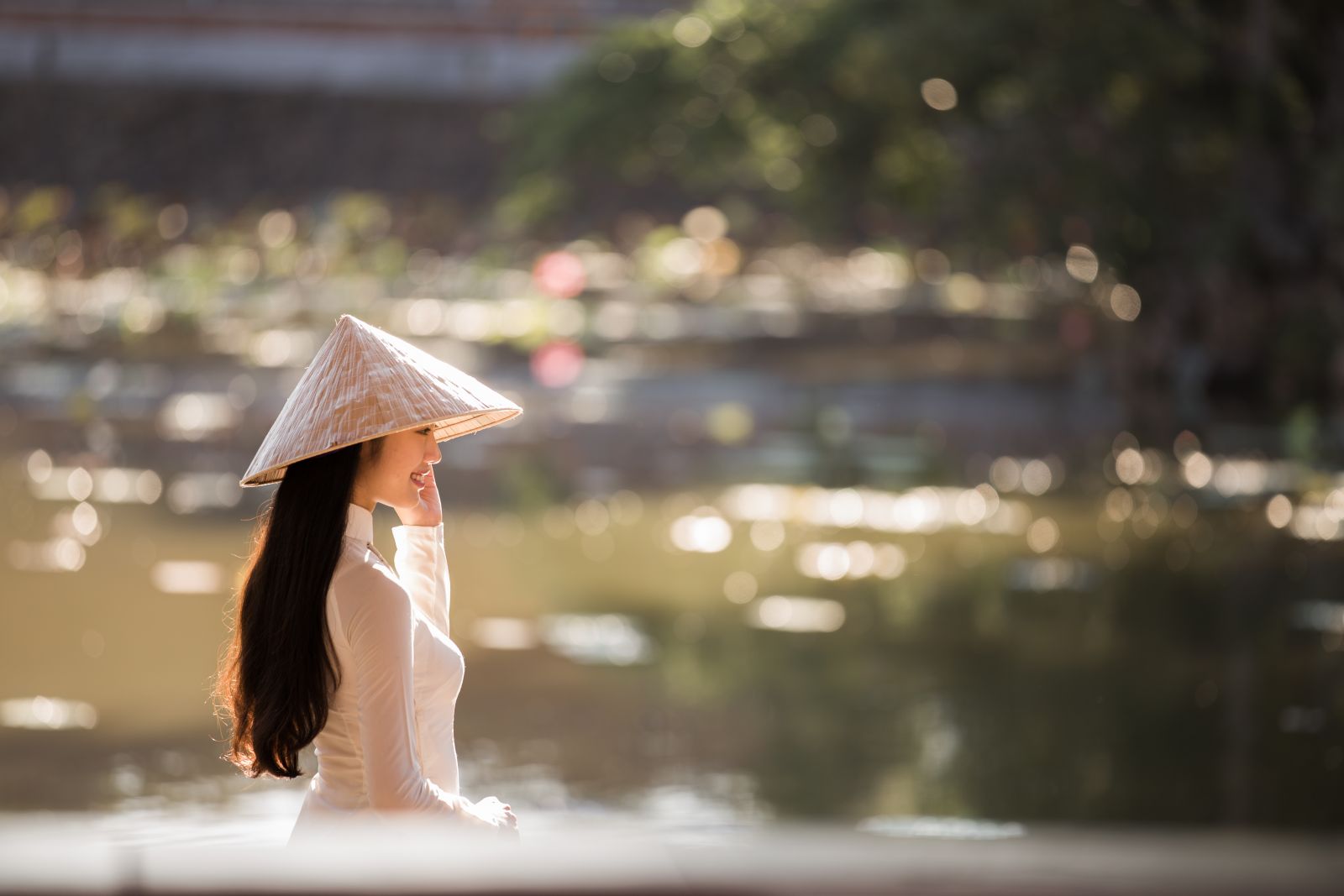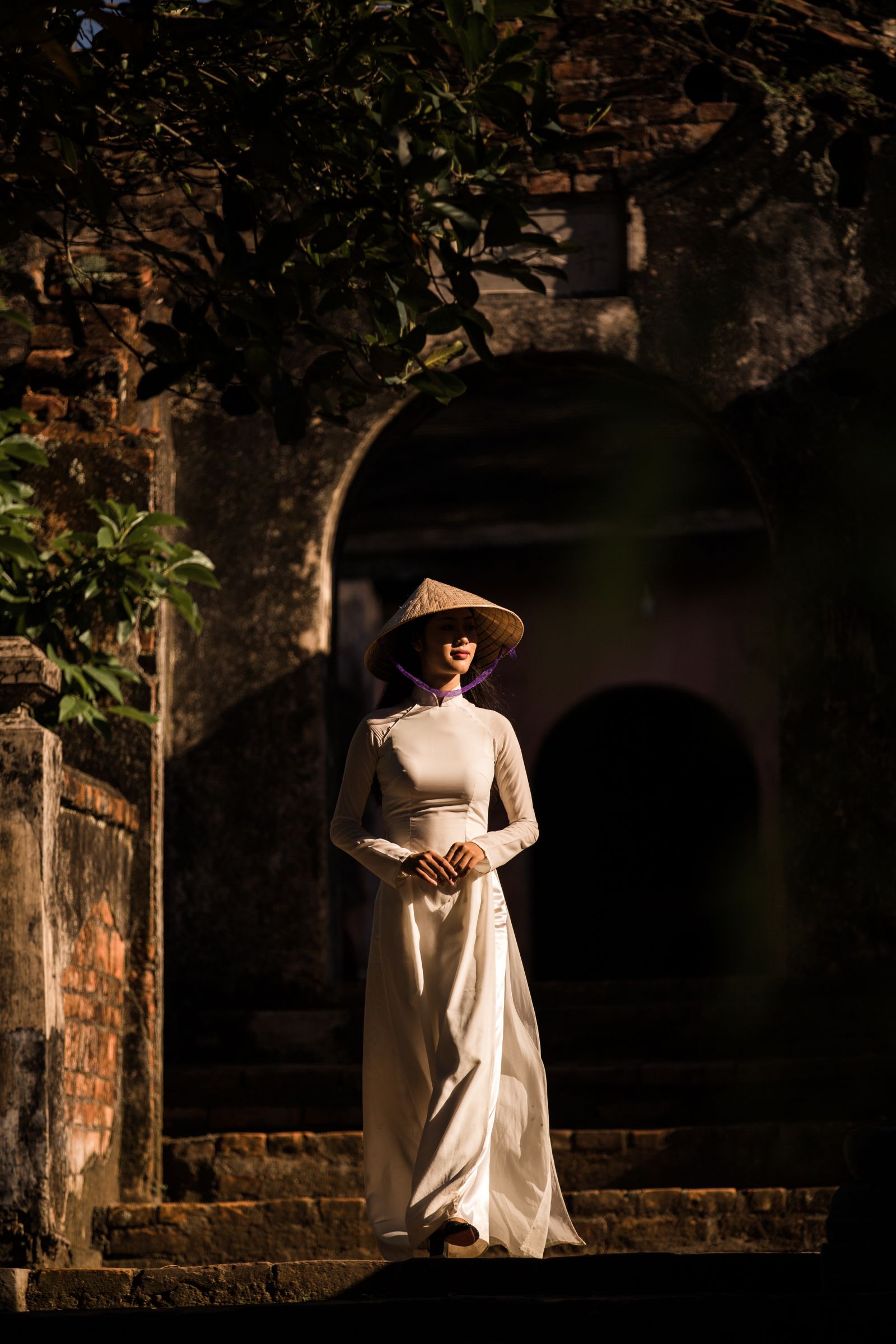
The Ao dai of Hue. Photo: Trung Phan
The letter of the Chairman of the Provincial People's Committee Phan Ngoc Tho sent to schools to start the campaign to encourage people to wear ao dai was a remarkable feature of the new school year 2018-2019 in Thua Thien Hue. With his active participation in the campaign, Mr. Tho wrote: “The image of Hue ao dai will have the opportunity for ao dai returning to its “golden age”, making a major contribution to raising the status of education and the beauty of Hue women with a new mindset in the process of integration and development; “make Hue more beautiful” in the eyes of friends and tourists.
The country has a tradition of wearing ao dai, but it is no coincidence that today, when discussing Vietnamese women's dresses many people immediately think of its Hue origins. The birth of the ao dai was supposed to be dated in 1774. After coming to the throne in Phu Xuan, Lord Nguyen Phuc Khoat issued many policies and mentioned how to distinguish the costumes of Inner Expanse and those of the Outer Expanse. Compared to Tonkin women wearing skirts, Cochinchinese women wore pants with gowns and that was the closest form to the current ao dai.
Since then, more than two centuries, Hue ao dai has come a long way and it is the process of changing from the long dress of the North with the two unbuttoned front flaps to the Inner Expanse ao dai with the flap cut into laps of the ao dai.
Although I am not a researcher to discuss it, what I feel is that the ao dai has a unique bond with the people of this ancient capital. Hue women always consider ao dai as a daily dress and maintain this habit until today.
In Hue, it is easy to see ao dai everywhere. The loveliest thing is the ao dai of the schoolgirls of Dong Khanh school. The purple color becomes a peculiar fascination that has been interpreted by the poet Vo Que as the color of the citadel and of the solemnity; so, it seems that this affects the characters and attire of Hue people. Purple is the preferred color of Hue people that comes from the expression “vermilion storey, purple attic". Purple, the color of the precious royalty, contains in it the depths that amazes people and makes them want to discover for more.

The Ao dai of Hue. Photo: Trung Phan
With ao dai festivals held on important occasions, especially the Hue Festival, Hue people know how to take the lead in honoring the value of the type of attire bearing Vietnamese identity. Nguyen Lan Vy, general director of VKSTAR JSC, director of the “Glorious Hue” Ao dai Show, said that as a person having lived and studied abroad, all her international friends always told her, ‘please put on ao dai.’
Instantly-made ao dai has become an indispensable gift of many women when visiting Hue. Travelers who love this service often call it “short-time” ao dai and ao dai shops on Mai Thuc Loan st, Ben Nghe st, Nguyen Sinh Cung St. ... are crowded all year round with customers.
I have suddenly read a survey on the internet entitled “What makes Hue always in the heart of visitors?”. The surprising answer is that it is not a monument, a mausoleum but the simple things like the peaceful street corner, the sweet voice, the sunset on the Tam Giang lagoon, and the particularly the charming and gentle white ao dai which have left a strong feeling of nostalgia in the heart of tourists. The explanation of the author is also very nice and profound: “Only a glimpse of Ao Dai is enough to evoke the charming and graceful image Hue. Ever since, ao dai has been chosen to be uniform for girls in many Hue high schools. While the white color of ao dai is pure and elegant, the purple one reminds us of a charming and graceful Hue girl. I think the Chairman of the Provincial People's Committee also felt this ...
By DAN DUY
